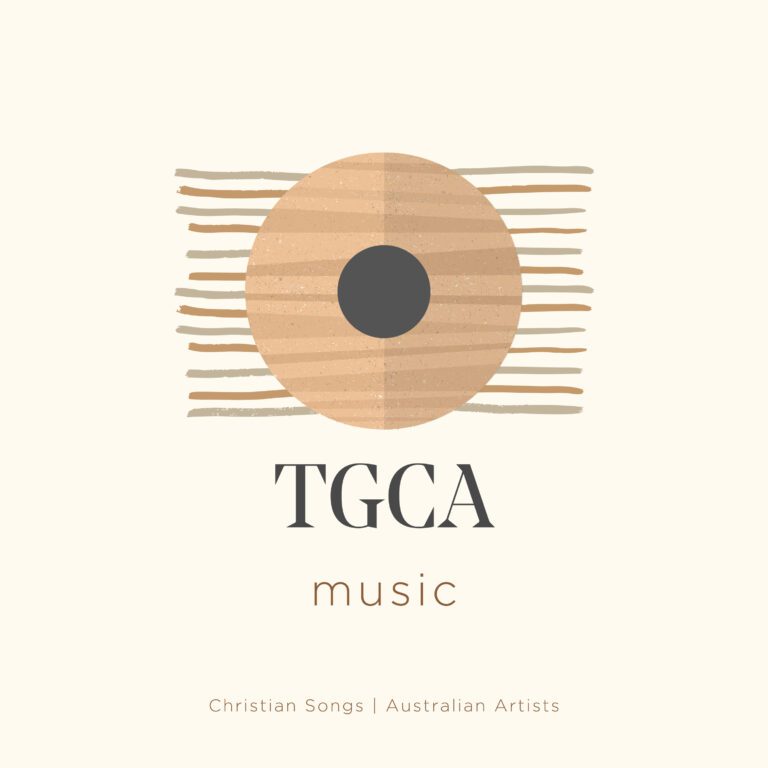People have long accused the Bible of laying a foundation for misogyny. Indeed Scripture has been handled misogynistically in the past; many eminent teachers used to preach a message that variously villainised or infantilised women. These messages reflected the culture of their time but they also helped to shape and perpetuate it. Similarly, the sad truth is that the Bible is often still being used in this way today. But there is a difference between the way Scripture is used and what it actually says.
Is God, as revealed in his word, a misogynist? In some cases, dare I say, it can actually seem like he might be. When Christians find something unnerving in the Bible many, often out of sincere faith, accept what the Bible appears to be saying, however jarring that may seem. Others are sufficiently confronted by what the Bible appears to be saying that it leads them to adopt a lower view of the authority and truthfulness of Scripture, or even begin to doubt their faith entirely. Then again, many Christians just ignore the unnerving passages and press on to more comfortable passages which means they might have a partial view of Scripture, a partial view of God, or might not feel safe to bring our full selves to either.
Far better, I would suggest, to take the time to explore further, engage with the text more deeply. I may need to have my thinking corrected by God’s word, against what seems common sense in my cultural context. But it might be true that my first reading of a Bible passage is not the most accurate and faithful. In this article, I want to give an example of the latter, by looking at two verses from Ecclesiastes.
Not One Upright Woman Among Them All?
Ecclesiastes 7:27–28 appears to be explicitly sexist on first reading:
“Look,” says the Teacher, “this is what I have discovered:
Adding one thing to another to discover the scheme of things—
while I was still searching
but not finding—
I found one upright man among a thousand,
but not one upright woman among them all.”[1]
Is this passage really saying that women are morally worse than men?
This passage never seems to elicit quite the same response from any two people. In the past it has been a springboard for some rather unsavoury opinions of women.[2] Modern commentaries are more measured.[3] Does this mean we cannot know what Ecclesiastes 7:27–28 means? Gaps like that—even small ones—might leave room for doubt to creep in about whether we can trust the Bible: any of it.
It should be acknowledged that the reason many struggle with the passage is that the rest of the Bible teaches that God created women with equal dignity and value. It shows that God cares for women—an attitude of care and compassion that is exemplified in the person of Jesus Christ in very real circumstances.[4] This wider evidence gives us reason to pause and reconsider this passage.
The Rhetorical Function of the Passage
Some of the styles of writing that feature in the Bible are not primarily making precise truth claims with every phrase, but making a basic point or achieving some other purpose. In this case, Sidney Greidanus suggests that the Teacher could be quoting a proverb to describe the universality of folly.[5] Proverbs and poetic devices with a very similar structure and purpose occur elsewhere in Scripture. See for example Job 9:3: “Though [humans] wished to dispute with [God], they could not answer him one time out of a thousand.” The ‘one in a thousand/none at all’ construction in Ecclesiastes is functionally a poetic, superlative way of saying “basically no one is upright”. When John Chrysostom in the fourth century, or Ruth Baker in the twenty-first century, focuses on the difference between one in a thousand and none in a thousand, we are both possibly missing the point.
Rather than explaining away a difficult passage, this is seeking to read the passage according to the kind of writing it is. Hebraic poetry, parable and proverbs are a deliberate means of making a point more explicit and making the text easier to remember for oral repetition.[6]
The Communal Audience of Ecclesiastes
All Scripture is written to elicit a response: shame that spurs us to repentance; understanding that spurs us to holiness; adoration that spurs exaltation of God; horror that spurs us to collective change. The modern approach to the Bible can be to look for precise truth claims in every phrase. And the modern context for reading the Bible can often be as a private individual. Because of this we read Ecclesiastes 7:27–28 as primarily saying something about women. The response elicited is, understandably one of indignation.[7]
However, while Scripture is timeless, it was written in a specific time and place, and so understanding the immediate context can help us unlock things we miss when we read with modern eyes. Ecclesiastes was traditionally read at the Feast of Tabernacles from at least the 8th century BC.[8] While we don’t know how Ecclesiastes was treated prior, from at least this period, Ecclesiastes was to be read publicly, to be heard as the message to the community. Therefore, if we approach the passage as a proverb, as the original audience may have heard it, and if we heard it collectively, it might push us to consider the state of our community.[9]
This is difficult for many of us to grasp because the ability to understand Scripture communally does not come as naturally to us. We tend to read it as individuals. Our worldview is more individualistic. So also, listening for the rhetorical function does not come as naturally to us. Recent Western culture has also become very alert to both intentional and unintentional prejudice and oppression—the way something is written can stop us hearing the intention of the writer.
Ecclesiastes 7:27–28 in Context
But what if we put our cultural intuitions to the side for a moment and try to hear what God is saying to us as a whole group, as a church, in this particular rhetorical form? We would hear God saying that wisdom is key (Ecclesiastes 7:19), but there is not a single righteous person who does not sin (verse 20). The Teacher tried to explore and test this truth (verses 23–25) and he found that sin is a snare as bitter as death (verse 26).[10] And what else did he find? He found one upright man among a thousand, but not one upright woman among them all—that is, basically no righteous person in the community at all. The following verse doubles down on this corporate application: “This only have I found: God created mankind upright, but they have gone in search of many schemes” (verse 29). Nobody is upright. Nobody is wise. God created us good, but we have forgotten him and gone our own way.
It is a worthy pursuit to interrogate Scripture. When we find passages that are unclear or worrisome, we should dig deeper. Yes, sometimes we will revise our own cultural intuitions. Often we will also discover more about the original context and the rhetoric Scripture uses—and so understand Scripture better. We can have confidence that God’s communication is not inconsistent with his clearly revealed character. We need to be guided by the Holy Spirit and allow God’s word to be illuminated, resisting the temptation to reject on impulse anything that sounds odd to our modern ears. We should question why it sounds odd and ask “What is God communicating to us here?”
[1] This translation is from the NIV. Other translations don’t include the word “upright”, which doesn’t appear in the original Hebrew, so why the addition? Is the NIV causing us unnecessary concern? Tremper Longman III says in his commentary that the Teacher, (‘Qohelet’ in Hebrew), “speaks elliptically. Many translations (the NRSV is an exception) fill in the gap by importing the adjective before man and before woman. The NIV is typical as it moves the statement into the realm of morality with the adjective ‘upright’. While perhaps undermining Qohelet’s subtlety, the NIV correctly makes explicit Qohelet’s meaning, as is clear by looking at the use of ‘upright’ (yāšār) in the next verse.” T. Longman III, The Book of Ecclesiastes, The New International Commentary on the Old Testament, William B Eerdmans, 1997, 206.
[2] In the fourth century John Chrysostom said with respect to this passage “What is woman, but a punishment that cannot be driven away, a necessary evil, a natural temptation, a desirable calamity, a domestic danger, one beloved for the colour of good?” Chrysostom clarifies that he is talking here of bad women and not all women. But after offering many examples in Scripture of good women, he still writes: “Let it cause modesty in women, that she was the first sinner, and who having cast man down in Paradise, did cast him out of Paradise. Let her weakness make her more careful in looking to herself, and the better to keep herself from danger.” Quoted in Michael Jermin’s 1639 A Commentary Upon the Whole Book of Ecclesiastes or The Preacher, 243–244 accessed at https://www.google.com.au/books/edition/A_Commentary/LUI7AQAAMAAJ?hl=en
[3] Longman believes that the Teacher does express himself misogynistically, but that this does not reflect God’s character. He cites Job’s friends, whose words are in Scripture and yet do not reflect God’s mind. Longman III, 204. Craig Bartholemew is more relaxed, stating: “There is nothing at stake theologically if he is expressing a misogynistic perspective”. C. G. Bartholemew, Ecclesiastes, Baker Commentary on the Old Testament Wisdom and Psalms, Baker Academic, 2009, 297. Iain Provan notes that the Teacher is not a misogynist but that his observations are resolutely male. W. Provan, Ecclesiastes, Song of Songs, The NIV Application Commentary, Zondervan, 2001, 155.
[4] For example, his compassion towards the Samaritan woman at the well in John 4; his care of the bleeding woman in Matthew 9 (thereby freeing women to be holy disciples when Old Testament law cast them out as unclean); his gentleness towards the sinful woman in Luke 7; his freeing of women to follow him as we see in Luke 10.
[5] S. Greidanus, Preaching Christ from Ecclesiastes, Foundations for Expository Preaching, William B Eerdmans, 2010, 196.
[6] Longman identifies the first twelve verses of Ecclesiastes 7 as proverbs with the ensuing text as instructional, written in poetic forms to aid remembrance.
[7] I am not suggesting here that historical interpretations were ill-educated or uncivilised. Demonstrably there were historical theologians on whom we still draw important knowledge. At the same time, we should not fall into the trap of assuming theological superiority in well-known historical commentators, such as Chrysostom. What it is important to point out is that some commentators on this passage (and others like them) were influenced by cultural attitudes to women. This is the case for us too. What we must seek to do is be aware of our cultural biases and put them aside in search of biblical truth.
[8] Michael Graves, ‘The public reading of Scripture in early Judaism’, Journal of the Evangelical Theological Society 50/3, 2007, 467–487.
[9] This reading is not inconsistent with the trajectory of the overall passage. The wisdom in this section and the broader passage is directed to the community at large (both 6:1 and 7:29 relate the broader theme of the passage to mankind).
[10] It should be noted here that the “snare” is described as a woman, but this should not be confused with the “woman” described as part of the human community in verse 28. The personification of sin or foolishness in verse 26 is directly from Proverbs, where both wisdom and folly are personified in the form of women.
To support the ongoing work of the local team at The Gospel Coalition Australia, make a donation here.















